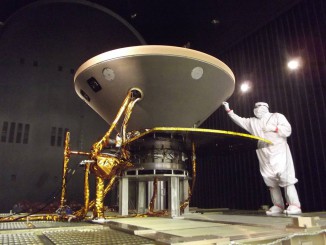
Mars

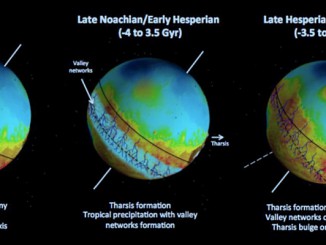
Great tilt gave ancient Mars a new face
Mars hasn’t always looked like it does today. Some 3 to 3.5 billion years ago, the planet underwent a huge tilt of 20 to 25 degrees. The gigantic Tharsis volcanic dome, which started to form over 3.7 billion years ago, grew so massive that it caused Mars’ crust and mantle to swivel around, shifting the Tharsis dome to the planet’s equator.
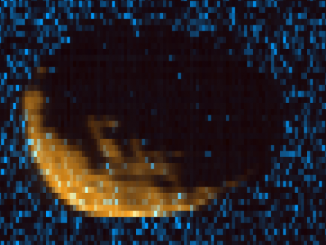
Solving the mystery of how Mars’ moon Phobos formed
In late November and early December 2015, NASA’s Mars Atmosphere and Volatile Evolution (MAVEN) mission made a series of close approaches to the Martian moon Phobos. Among the data returned were spectral images of Phobos in the ultraviolet. The images will allow MAVEN scientists to better assess the composition of this enigmatic object, whose origin is unknown.
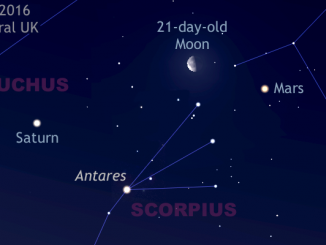
See the Moon, Mars and Saturn triple conjunction of 1 March
In the pre-dawn twilight of Tuesday, 1 March, the 21-day-old waning gibbous Moon acts as a convenient celestial guide to planets Saturn and Mars. For observers in the centre of the British Isles, the best time to see this triple conjunction is shortly before 6am GMT, when the trio are highest in the sky to the south.


See the Moon meet Mars in the pre-dawn of 1 February
As avid skywatchers will already know, all of the bright naked-eye planets are currently visible in the pre-dawn sky — the first time in eleven years that such an alignment has occurred. At 6am GMT on Monday, 1 February, the last quarter Moon in the constellation Libra lies just 2½ degrees from magnitude +0.8 planet Mars low in the south for UK observers.
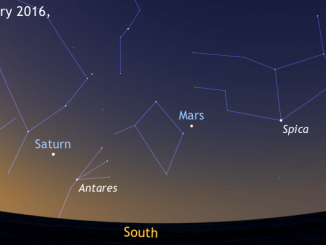
See all five naked-eye planets gathered in the morning sky
All five of the bright naked-eye planets are observable in the pre-dawn sky from about the third week of January 2016, particularly if one lives south of the equator. But even from the UK, you can get to view the spectacle if you time it right — and the weather obliges! The last time that Mercury, Venus, Mars, Jupiter and Saturn appeared in the same sky was 11 years ago.
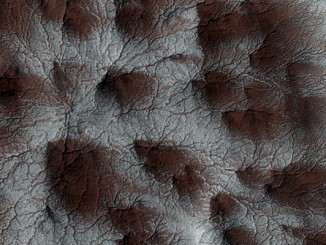
Martian starburst spiders
Mars’ seasonal cap of carbon dioxide ice has eroded many beautiful terrains as it sublimates (goes directly from ice to vapour) every spring. In the region where the High Resolution Imaging Science Experiment (HiRISE) camera on NASA’s Mars Reconnaissance Orbiter took this image, we see troughs that form a starburst pattern.

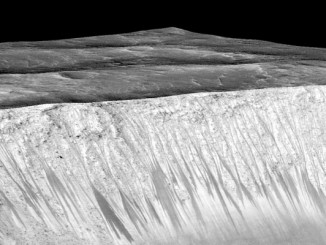
No. 2 Water on Mars
Liquid water existing on the surface of Mars, in the here and now, has been the holy grail of Martian exploration for some time, but in October 2015 NASA announced that the orbiting Mars Reconnaissance Orbiter (MRO) had turned water-diviner to find compelling evidence that water is bursting out onto the red surface and trickling down the slopes of crater walls and hillsides.
